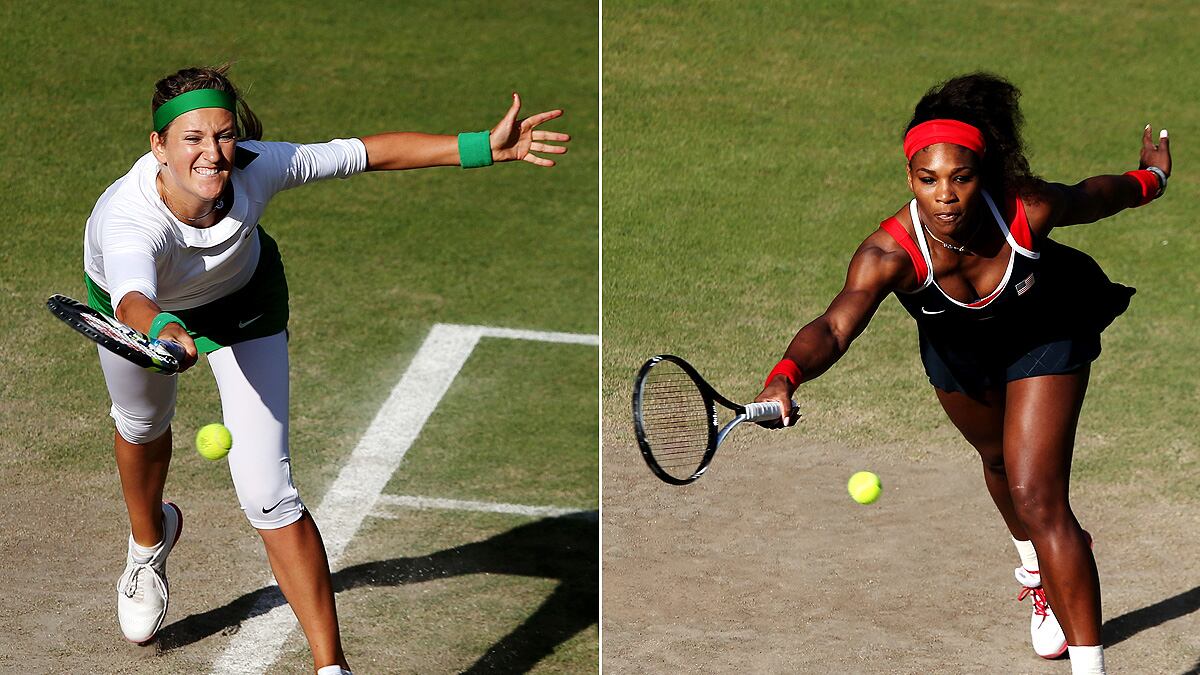The powers that be in New York—Madison Avenue, Broadway, Anna Wintour—would have loved a Serena Williams–Maria Sharapova final at the U.S. Open. She of fashion design and sport’s mightiest sisterhood against she of Russian glam and a namesake candy line.
But on Friday at Flushing Meadows, far away from Manhattan and the glamified hopes of a final-in-lights dream prizefight between the one-name superstars “Serena” and “Maria,” Victoria Azarenka made sure that such a joust wouldn’t take place.
Vika, as she’s known in the tennis world, denied Sharapova in the day’s first semifinal in a dramatic one-on-one drama between two shrieking, hard-hitting, tall-as-skyscrapers athletes that ended with Azarenka walking away the winner, 3–6, 6–2, 6–4.
So a Vika-Serena final is what will happen in Queens Saturday night, and will certainly be a show worth top billing for tennis—and for sports. Because, more than anything else, Serena and Maria’s latest battles wouldn’t have made for good entertainment, even off-off-off Broadway entertainment.
Playing in the Olympic final, Serena marched past the 25-year-old in decisive fashion, dropping just one game in a 6–0, 6–1 thrashing. Somehow, Azarenka’s 6–1, 6–2 loss to Williams in the round before looked vastly closer, two games painting a completely different losing picture.
But feeding the hope that Serena and Vika could be a blockbuster is the fact that it has happened before. And the Belarussian has the tools that could possibly hurt Serena on court, sending back the shots that are decisively the hardest hit in women’s tennis with interest, troubling the American in a way that no other woman on tour can do right now—not even Maria. In 2010, Vika led Serena by 6–4, 4–0 at the Australian Open, only to watch her lead slip away.

Azarenka is just 1–9 against Serena in 10 career meetings, but earlier this year they did battle on Centre Court at Wimbledon—the game’s Shakespearean stage to New York’s Woodstock-like Arthur Ashe Stadium—in a match that many considered the best of the year. There was Vika, just 23, banging the ball back with Serena, matching her grunt-for-grunt, stroke-for-stroke.
Something similar happened between them at last year’s Open. It was the third round, and Azarenka and Williams met on the first weekend of the Open instead of the second, as the American was lower seeded and had encountered Vika earlier in the draw. Serena won, 6–1, 7–6 (5), but not before Ashe was electrified by the scrappy fighting back of Azarenka, who popped a lob volley over Serena’s head late in the second-set tiebreaker and punctuated the winner with a “C’mon!” fist pump.
Azarenka is decidedly not a fan favorite, especially in New York. But that is just it—it’s part of the theater of the match. Here is an athlete who insists on walking onto the court with her headphones cupped to her ears and her hoodie over her head, bobbing like a prizefighter before a big battle. She’s told the press she dances backstage. What moves? She won’t share.
Yet Serena is the one who has been dancing by opponents in droves this summer. First Wimbledon, then the Olympics. It is the American who has come back from a health scare—a pulmonary embolism last year—that has finally found her form more than 12 months after returning to the game.
For tennis, it is great that Serena is back, and it is great too that these women are meeting in the U.S. Open final, with the chance to build up a rivalry the game is missing. There are no more Martina-Chrissie or Monica-Steffi bouts to be had, not even the ongoing drama that was generated between Serena and Justine Henin, who retired in early 2011.
Azarenka presents that challenge for Serena because of what she can do in between the lines. She puts such power on the tennis ball, and she trumped Sharapova because of her sound movement. Vika scurries about the baseline with speed, soundly finding the ball in front of her hip and not catching it behind her body, like Sharapova does when she struggles, as so often happens when she faces Serena.
More than anything else, the Sharapova-Serena “rivalry” has run its course. Serena leads 9–2, but has won their last eight matches in a row. She has lost just nine games in their last three matches alone. It’s like the Rockefellers taking on the owner of a corner deli in a land battle—they just aren’t going to budge.
That is what Vika can do against Serena: move her. The world’s No. 1 is happy to do so if she gets the chance. Serena has for so long fed off the notion that it is Williams against the world. But now, with an adoring American crowd behind her, that role has gone to Vika, clad in a black top with a neon yellow skirt for much of this tournament, a Gotham villain with a city to crush.
What tennis fans—and the sporting public—want in Saturday night’s final is a fight, a blow-by-blow between two of tennis’s best. That simply wasn’t going to happen with Maria and Serena, glamorous though it would have been. So while Vika is a little rough around the edges, she can use the edges of the lines on court to rough up Serena, and that is the kind of battle—the kind of theater—that everyone wants to watch.






